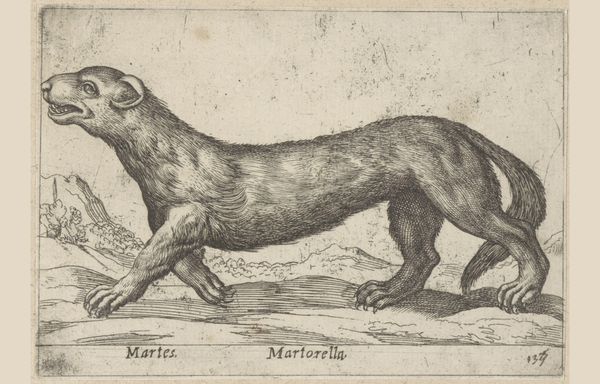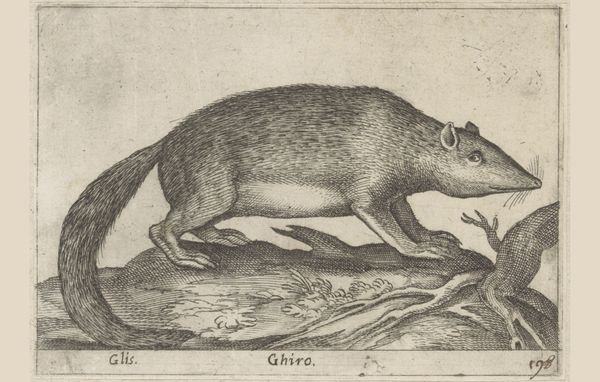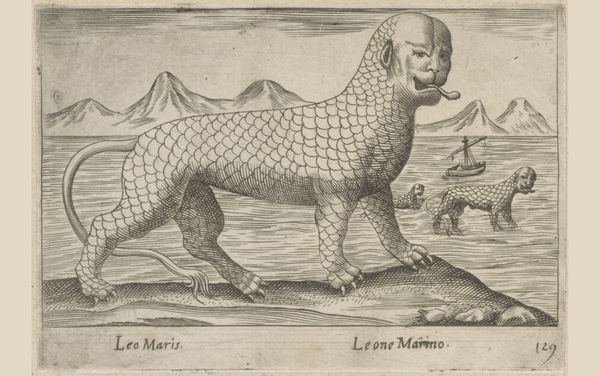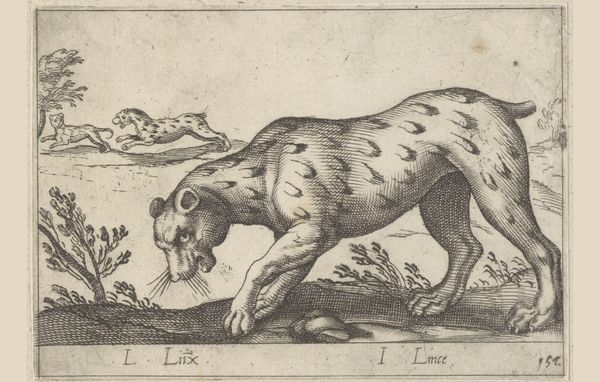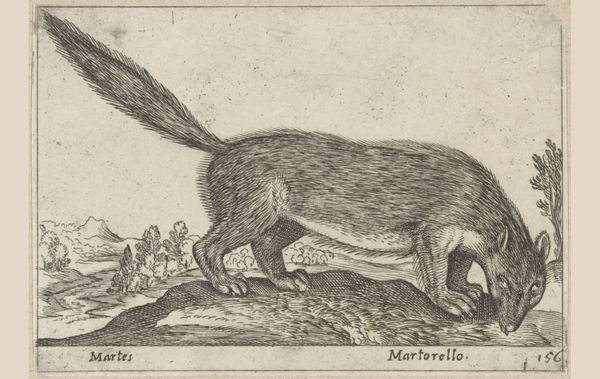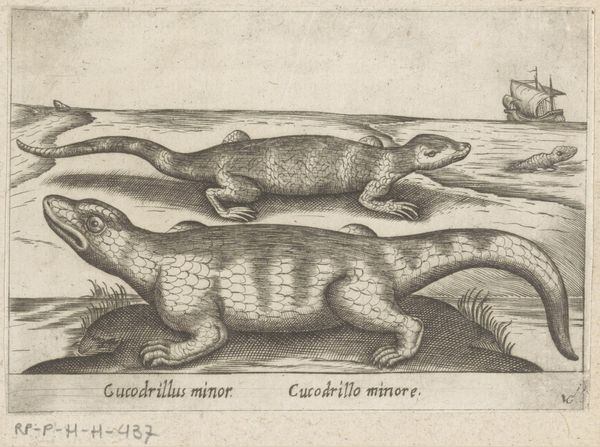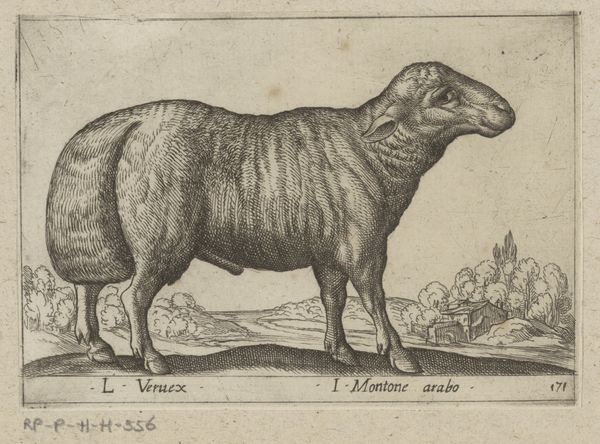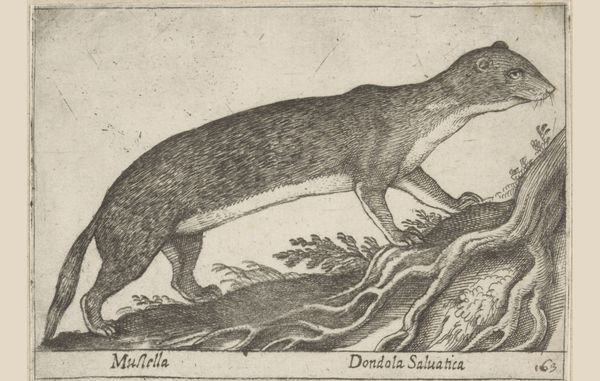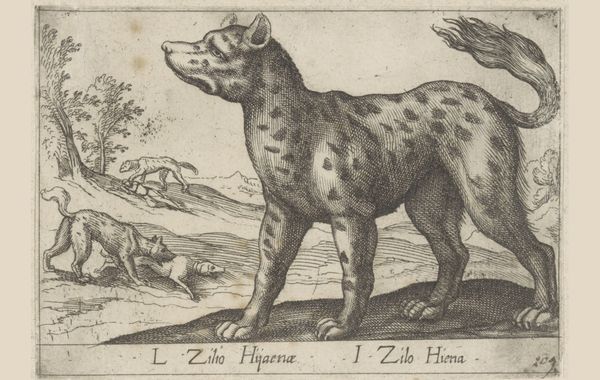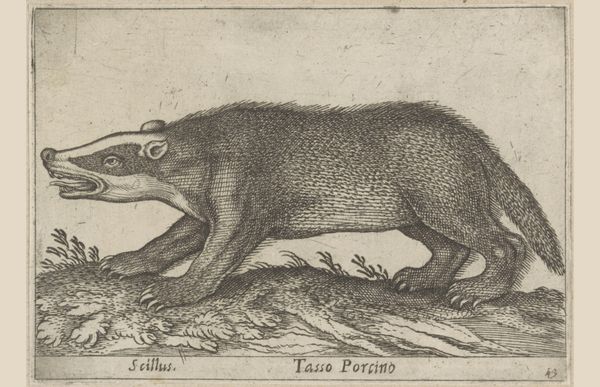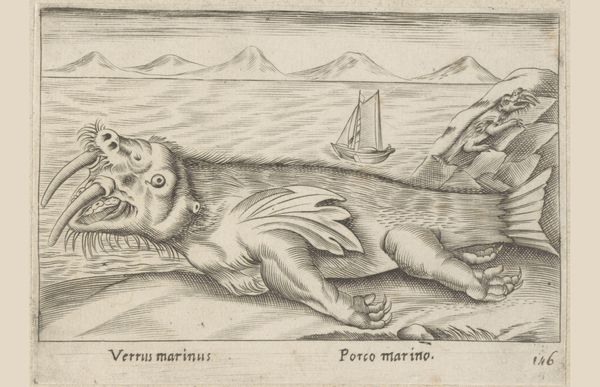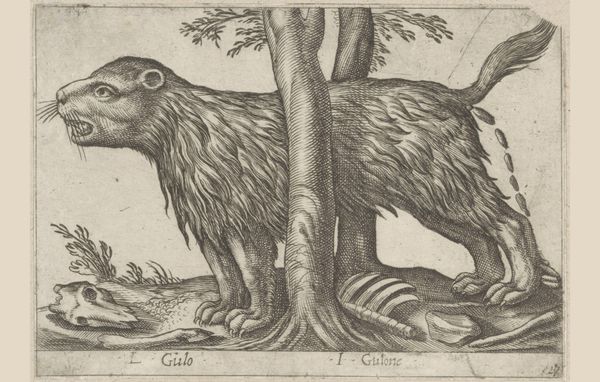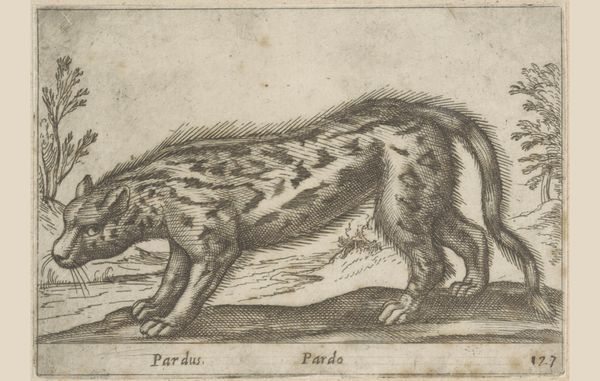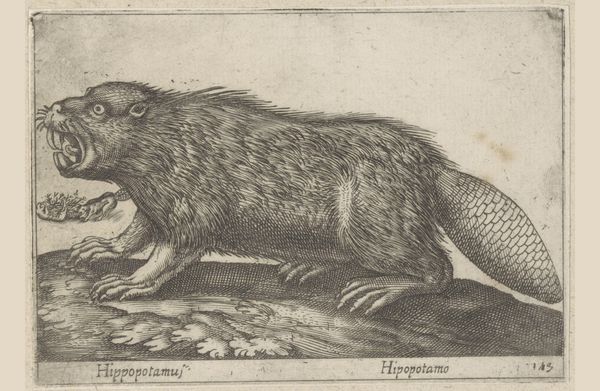
print, engraving
#
narrative-art
#
baroque
# print
#
engraving
Dimensions: height 95 mm, width 137 mm
Copyright: Rijks Museum: Open Domain
Curator: I find the starkness of this engraving so compelling. Look at the contrast of light and dark, the animal rendered with such precision, despite being, well, a sea calf. Editor: I’m struck by the quality of the line work. Antonio Tempesta created this print before 1650; can you imagine the labor involved? The minute cross-hatching suggests the animal's skin, but also, importantly, shows an expertise in materials readily at hand and widely traded, highlighting an artist working within both the physical constraints and broader mercantile context of the era. Curator: It’s an interesting contrast to the animal’s situation, stuck between environments. The Baroque era did have this thing of ordering and classifying the world in an attempt to put everything in its place and give meaning, but prints like these ended up circulating widely, and reshaping worldviews and creating new social dynamics by disseminating ideas and information on a mass scale. It’s amazing to me that a little “sea calf” could embody this kind of transformative power. Editor: Absolutely. I wonder about the engraver's tools. What kind of burin was used to get such fine lines? And what kind of paper received the ink so well? Was the print intended as a study? I'm less interested in Tempesta's intentions than in how these materials mediate his engagement with the natural world. A natural wonder translated through artisanal knowledge. Curator: That makes me consider the contemporary impact, and how, as a multiple, prints like this one were sold and traded, informing social norms, class relations, and influencing our own gaze. What about the broader socio-political landscape—might prints like these feed a kind of anthropocentrism that justifies our separation from, and thus exploitation of, the natural world? Editor: Well, and let's consider the audience too, who would've seen and understood this print. Were these the elite and wealthy, or a rising merchant class seeking new horizons and investments? That level of consumerism becomes tied to the material and manufacture itself, impacting production methods. Curator: It leaves me thinking about the interplay of knowledge, power, and image-making in that period. The natural world reduced to ink and paper—circulated and consumed—is potent stuff. Editor: For me, it prompts thinking about the artist's knowledge, their craft—a connection across time, expressed in the lines of a calf at the edge of an early modern world.
Comments
No comments
Be the first to comment and join the conversation on the ultimate creative platform.
